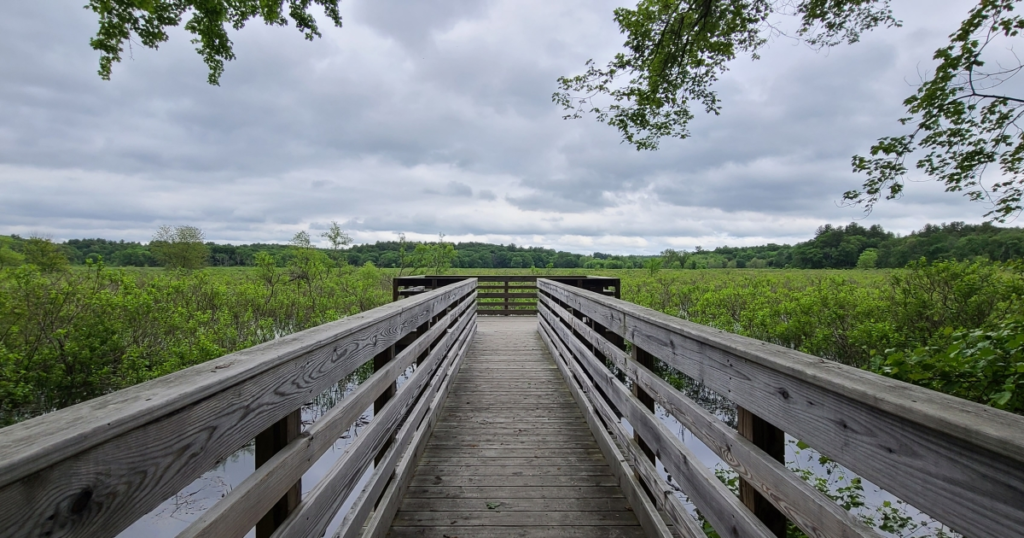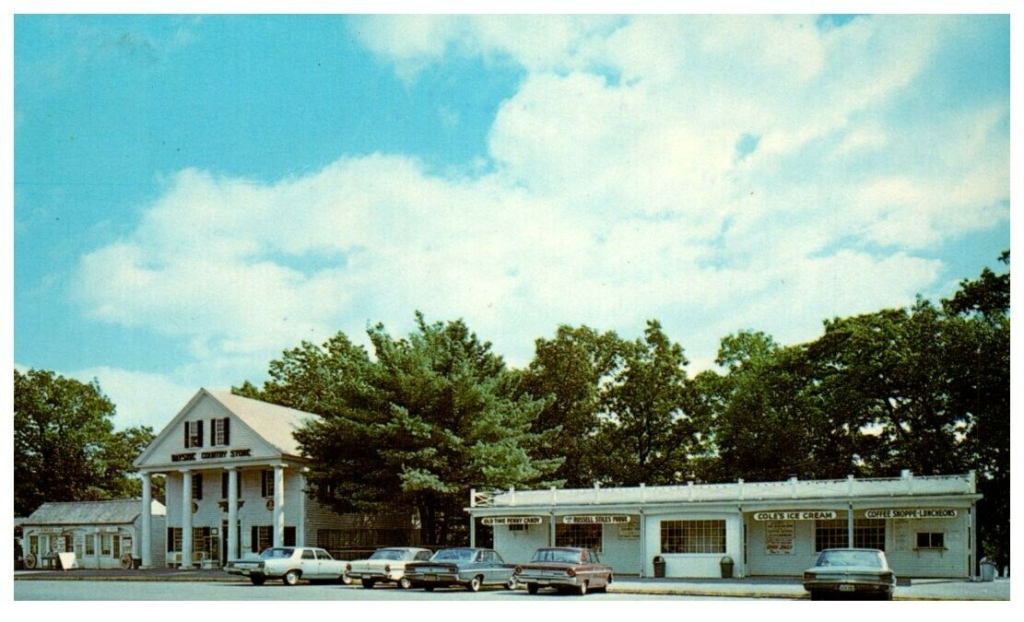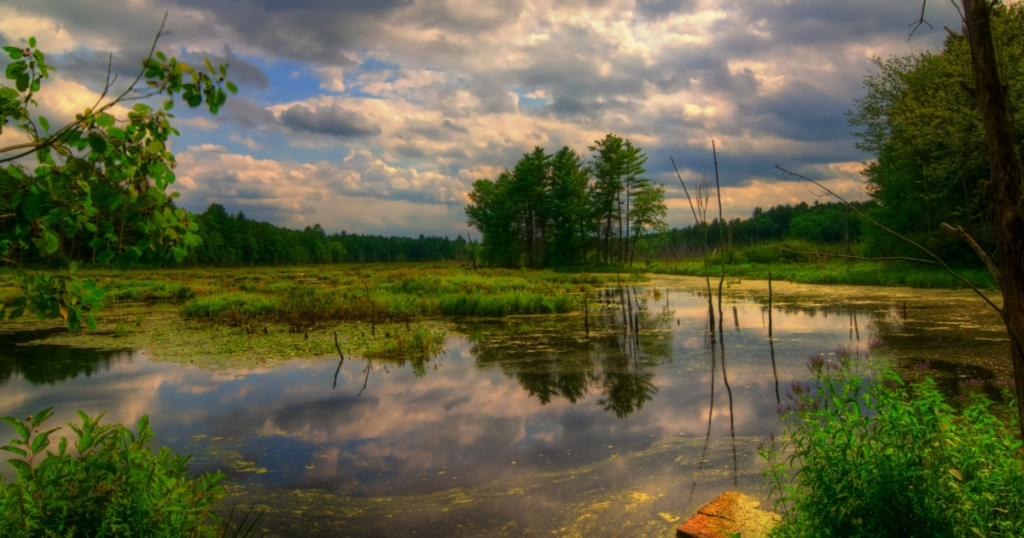Sparsely populated and with a rich colonial history, Sudbury is an affluent city in the Metro West region of Greater Boston.
The oldest operating inn in the United States awaits in Sudbury, and starting in the 1920s, it was the centerpiece of a living history museum proposed by automaker Henry Ford (1863-1947). ).
His plans never came to fruition, but there are interesting remains on the grounds of the Wayside Inn and further along the Boston Post Road (Route 20) in Marlborough.
True to its rural character, Sudbury has two national wildlife refuges, as well as a charming historic center where frontiersmen gathered before leaving to fight at the Battle of Lexington and Concord at the dawn of the American Revolutionary War.
1. Tippling Rock

South of Sudbury there is a significant area of open land accessible through conservation land acquired by the city in the late 1990s.
The summit of Tippling Rock, part of Nobscot Hill, is more than 600 feet above sea level, making it the highest point in the city, with distant views of Boston.
According to tradition, the rock atop the ledge was used as to seesaw (hence the name) and was used by Native Americans for communication.
From the top, you can explore the western suburbs and see landmarks like Great Blue Hill, John Hancock Tower, Prudential Building, and Four Seasons Boston.
2. Great Meadows National Wildlife Refuge

The headquarters of the Great Meadows National Wildlife Refuge is located in Sudbury, in a unit that includes wildlife-rich freshwater wetlands on the Sudbury River.
Famous for its bird-watching opportunities, it is one of two units totaling more than 3,800 acres of important wildlife habitat in Sudbury and Concord.
The Sudbury section includes the Weir Hill Trail, for hiking through forests, wetlands, riverbanks, streams, and ponds.
The shorter Red Maple Trail has an observation deck where you can spot swamp wrens, muskrats, and painted turtles in the riparian area. On the water, you can launch your canoe or kayak at the shelter to paddle the 1.5-mile Sudbury River Paddling Trail.
3. Redstone Schoolhouse

Another of the old buildings that make up the Wayside Inn Historic District is this one-room schoolhouse, just steps from Martha Mary Chapel.
Built in the late 18th century, Redstone School was originally located on Redstone Hill in Sterling, Massachusetts, and was moved by Ford to the Wayside Inn in 1927.
According to popular belief in the late 19th and early 20th centuries, this was the school where the nursery rhyme “Mary Had a Little Lamb” by Sarah Josepha Hale (1788-1879) took place.
This is all based on the memories of a 70-year-old Sterling resident, Mary Tyler (1806-1889), who identified herself as Mary, who brought her pet sheep to school one day when she was a child.
4. New England Garden Company

In Sudbury, you can visit the beautiful outdoor display garden and indoor showroom of this company specializing in decorative garden products.
As the largest company of its kind in the Northeast, New England Garden Company curates a wide range of ornaments, antique furniture, artwork, repurposed architectural elements, and more. other, originating from throughout the United States and some European countries.
In these 6,000 square feet, you can lose all sense of time as you wander through centuries-old arches, stone troughs, sundials, mills, statues, fountains, cisterns, and Victorian ironwork, the list is long.
5. Wayside Country Store

Head a little further east along Highway 20 and in Marlborough, you’ll be greeted by a historic building that until the late 1920s still stood proudly in Central Sudbury.
This is the Wayside Country Store, a large old-fashioned candy store that was part of Ford’s grand plans for the Wayside Inn.
The former federal-style building was known as the Parmenter-Garfield General Store, built in 1790 and served a variety of functions, including a post office and school where the future 20th President James A. Garfield (1831-1881) worked as a teacher. a time.
Ford purchased the building in 1928 and sawed it in half before moving it to the north shore of Hager’s Pond on Route 20. There is a selection of board games and puzzles on the second floor, while the resort also has a European-style bakery and a full-service restaurant.
6. Boston Paintball Maynard

On the Sudbury/Maynard line, there is an outdoor paintball facility open seasonally from April to November.
Combining woodland and open environments, these three courses are located on the grounds of the Maynard Rod and Gun Club.
Most memorable is Maynard Outpost, an interesting construction site with many multi-level structures and interesting obstacles like destroyed tanks.
The bunker, known as Bunker Hill, features several cabins and towers, as well as a downed helicopter, below which the towering hill offers a major strategic advantage. Registered games are available on weekends and reservations are required on weekdays.
7. Garden in the Woods
Just across the border in Framingham is a sensational botanical garden, nestled in a mature oak forest and home to the Native Plant Foundation.
Open from mid-April to mid-October, Garden in the Woods is dedicated to native New England species and is home to the region’s largest collection of landscape wildflowers, with approximately 1,700 plants across 1,000 species. , many of which are rare or threatened.
For 30 years, the garden was the passion project of landscape designer Will C. Curtis (1883-1969) and was donated to the New England Wildflower Society after his death. Featured here is New England’s largest retail native plant nursery.
8. Duck Soup

Among the long list of interesting stops along Route 20 is this family-owned store with a diverse product line, from gourmet foods and high-end cookware to ceramics craft and locally produced spirits.
Supporting local and regional producers, Duck Soup has been open for more than 50 years now and made headlines in 2018 when it acquired the rights to produce the beloved Sky Bar, a candy introduced in 1938 by Revere’s Necco company is now defunct. This is made and sold in a separate display case, right next to it.
In the main store, you can discover a wealth of New England-made specialty products, from rum to maple syrup, as well as a vast selection of candies and snacks imported from elsewhere. as far away as the UK, South Africa, and the Netherlands…
9. Bruce Freeman Rail Trail

By the time you read this, Sudbury may be a hiker’s and cyclist’s dream destination, at the intersection of two long-distance railway lines.
The first of these is the Bruce Freeman Rail Trail, which will eventually be 25 miles long and was under construction in Sudbury as we wrote this list.
This route would extend 5.9 miles north-south through the city on the right of way of the former Framingham and Lowell line (1871) of the New York, New Haven and Hartford Railroad.
The trail would connect with the Mass Central Railroad Trail, located just off the inactive Massachusetts Bay Transportation Authority, which is a popular but unpaved hiking route in the city.
When completed, the Mass Central Railroad will be a 104-mile east-west route between Boston and Northampton.
10. Haskell Field

An ideal location for active recreation, Haskell Field has a variety of athletic facilities used by local programs such as Sudbury Youth Soccer.
On this open green space are six small and three large soccer fields, lacrosse fields, and a 90-foot baseball field.
But the highlight for parents has to be the wonderful playground, fenced and with enough space for children aged 2-5 and 5-12 to be active on the climbing equipment, swings, bridges slide, and covered picnic tables.
There you will find restrooms as well as a counter selling cold drinks and snacks.
11. Wayside Inn Historic District

Built in 1686 and in operation since 1716, the Wayside Inn is the oldest continuously operating inn in the country.
In 1923, it captured the imagination of Henry Ford, who sought to create a living history attraction on the property as a predecessor to his Greenfield Village.
Among the buildings that went up were a flour mill, the nondenominational Martha-Mary Chapel, and the historically significant Redstone School, relocated from Sterling, Massachusetts.
Inside the inn are several museum rooms displaying artifacts from the colonial period, while the iconic space here is Longfellow Parlour, which inspired Henry Wadsworth’s poetry collection Longfellow (1807-1882). , Tales of a Wayside Inn (1863).
12. Wayside Inn Grist Mill

One of the must-see attractions on the Wayside Inn grounds is the water-powered flour mill, built by Henry Ford in the late 1920s.
The water wheel drive basin dates from the early 18th century and the present mill was built near the site of the Howe family’s original flour mill of that time.
Open to the public, this mill is a perfect piece of rural New England and once produced flour for Pepperidge Farm, which later inspired the logo for their baked goods.
You can buy bags of flour from the dormitory store and watch flour milling demonstrations on weekends during busier times.
13. Assabet River National Wildlife Refuge

Much of western Sudbury is managed by this 2,300-acre National Wildlife Refuge, on land used by the U.S. Army from 1942 until granted to the Fish and Wildlife Service. United States in 2000.
Along the 24 kilometers of trails, you’ll come across curious remnants of a past life, in the form of World War II ammunition bunkers hidden in the woods.
From Sudbury’s main parking lot, you can access an extensive network of trails that lead through forests and open fields to vernal pools and the shores of vast Puffer Lake.
The visitor center is also located within Sudbury’s boundaries, in a 5,000-square-foot eco-friendly building, with exhibits on the region’s ecology, prehistory, and the country’s conservation pioneers dating from the 19th century.
14. Sudbury Center Historic District

Historic Sudbury is like an open-air museum, with centuries-old architecture surrounding a common area and stately mansions in every direction beyond.
Militia and frontiersmen assembled at this very location on the morning of April 19, 1775, to fight in the Battles of Lexington and Concord.
Right on the lawn is the First Parish Church (1797), importantly the focus of Sudbury residents’ lawsuit against Thomas Stearns (1838), which established that the parish and not the town controlled the records of the parish.
To the east are the Greek Revival Town Hall (1846, rebuilt 1932) and the Loring Town Hall (c. 1730), which now houses the local historical society museum, and to the south is the Federal-style Hosmer House (1793). There is a lovely little park here, with a playground and pond.
15. Sudbury History Center and Museum

In 2021, the Sudbury Historical Society opened its new headquarters and museum at a historic site in Central Sudbury.
This is Loring Parsonage, built around 1730 as the residence of the town chancellor, then home to a long line of the Wheeler and Hayes families.
The exhibition space inside is the Jonathan Baggott Gallery, which details the history of Sudbury from its earliest settlements to the present day.
Additional galleries delve deeper into the Rev. Israel Loring and his family and display a selection of artifacts from the society’s rich archives. The gift shop is also worth your attention, full of locally made crafts, clothing, and accessories.







Leave a Reply